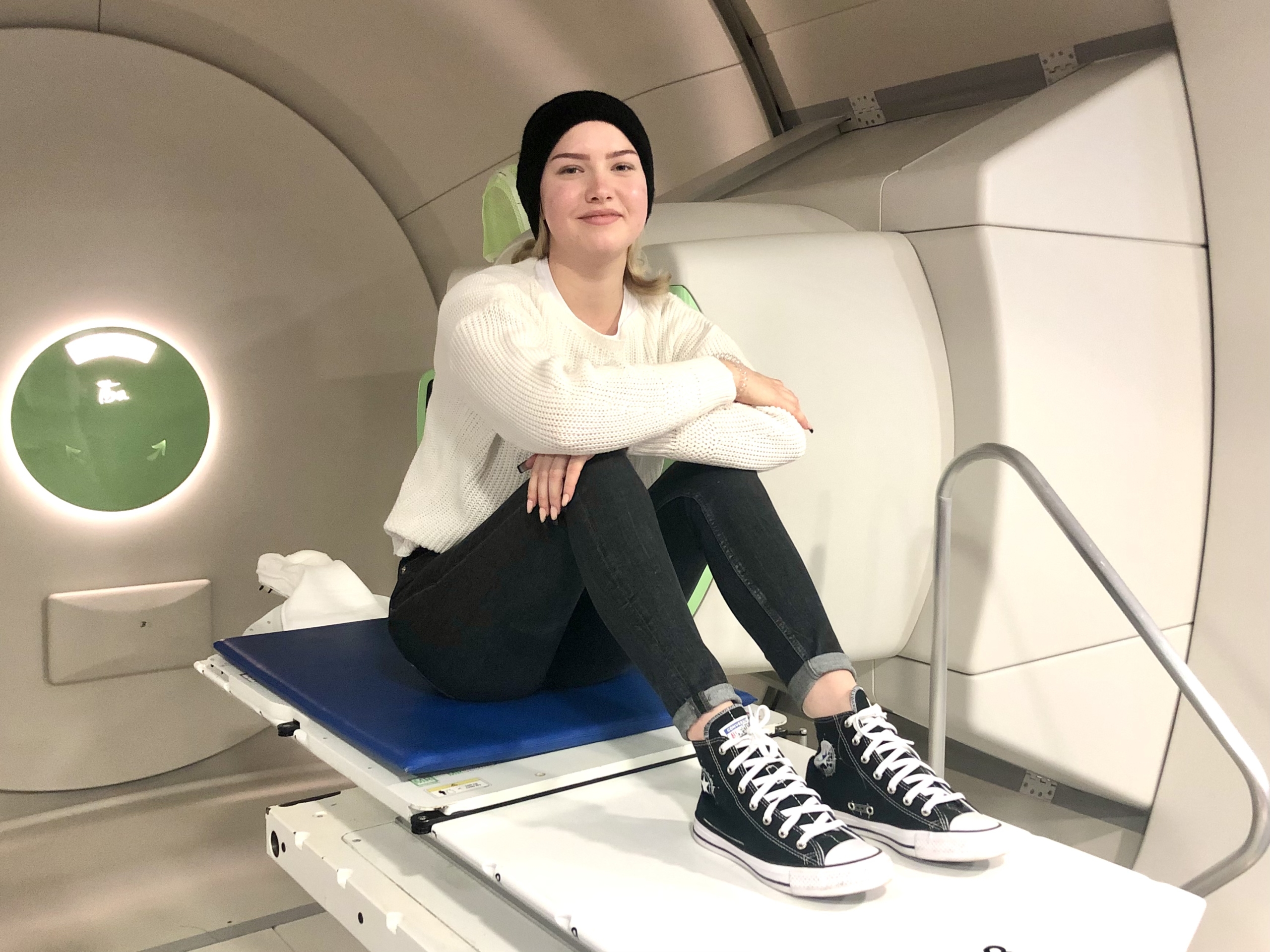
Anniversary: 2000th treatment of a child
Children and young adults in particular benefit from tissue-sparing radiation
2023 is a very special year for the West German Proton Therapy Center (WPE): we are celebrating our tenth anniversary. Shortly before this anniversary, the treatment of the 2000th child has just been successfully completed. Her name: Veronica.
In 2021, the now 17-year-old was diagnosed with a meningioma, a brain tumor. Veronica had been suffering from severe headaches since puberty, which were initially classified as familial migraines and attributed to psychological stress. But then suddenly she could no longer feel her left leg and her left arm felt numb, as if it had fallen asleep. A seizure followed by an MRI finally led to certainty: the then 16-year-old had a brain tumor the size of a tennis ball, which was not spreading but was growing. Just one week later, she was already in surgery at Ulm University Hospital. During the nine-hour operation, the tumor could not be completely removed as it had already grown into the bones and blood vessels. However, the headaches disappeared after the operation and it was hoped that the residual tumor would not grow any further.
However, this changed in the summer of 2022: the headaches returned and the specialists in Ulm quickly realized that further treatment was necessary. They referred Veronica to the WPE. For good reason: none of the proton therapy centers in Germany has as much experience in the treatment of childhood tumors as the WPE at Essen University Hospital.
Gentle irradiation with protons
Around 300 patients up to the age of 18 are irradiated in Essen every year. Half of them are even younger than seven years old. This results in a special expertise that has helped the clinic gain an international reputation: The young patients travel to the Ruhr metropolis from all over the world, with some even coming from China, Australia, South Africa and Mongolia. Around 20 percent of patients at the WPE come from abroad. They all benefit from the advantages of the treatment: the proton beam has a targeted effect, especially where it is needed – in the tumor. “The growth of the diseased tissue is stopped and the surrounding healthy tissue is largely spared. If a tumor is located very close to areas of the body with an important function or if a particularly high dose of radiation is required, proton therapy should be considered as a gentle alternative,” explains Prof. Beate Timmermann, Director of the Clinic for Particle Therapy and Medical Director of the WPE. This is why this treatment option is of particular importance in cancer therapy for children. “Children are growing and still have their whole lives ahead of them. It is therefore all the more important that healthy tissue is spared and late effects are avoided.”
Although the majority of patients are not yet adults, adults can also benefit from proton therapy. Unfortunately, radical surgery for prostate cancer, for example, can often lead to impotence and incontinence. Proton therapy can also be advantageous in certain cases compared to conventional radiation with photons and can improve the quality of life of those affected. In the case of eye tumors close to the optic nerve or retina, proton therapy can often preserve vision. Both types of cancer are also treated at the WPE. Many adults with brain tumors, sarcomas and head and neck tumors are also treated with protons at the WPE
In addition to brain tumors (more than half of cases) and sarcomatous tumors (more than a quarter of cases), other types of tumors in the area of the base of the skull or head/neck, spine and pelvis are also treated at the WPE. Around 20 percent of childhood tumors occur before the age of three. For patients under the age of six, sedation is often necessary in order to significantly reduce stress and ensure a calm position and therefore targeted radiation. The WPE also has a great deal of experience in these anesthesias and has already performed them on over 1000 children.
Maintaining quality and enjoyment of life
Such sedation was of course not necessary for Veronica, our 2,000th young patient. She underwent five radiotherapy sessions per week. After a total of 30 sessions, the therapy was successfully completed. During each session, the tumor was irradiated twice for 60 seconds from different directions. With very few side effects: Shortly after the session, Veronica always felt a little tired and complained of headaches. However, pain medication quickly provided relief. There was localized hair loss in the irradiated area.
But in the afternoon after the treatment, she was always fit enough to explore the Ruhr area with her dog Nala and her mother, who accompanied her, or to study for school. The exams for her secondary school leaving certificate are coming up in May. Veronica can approach them just as optimistically as her other plans for the future: she would like to train as a pharmaceutical technical assistant and start a large family – from a medical point of view, there is nothing to stop her. And anyone who got to know the 17-year-old at the WPE knows that nothing else should stop this fun-loving teenager.
All the best, dear Veronica!
Treatment of children
We have compiled all the important information on the treatment of childhood tumors with proton therapy for you.
